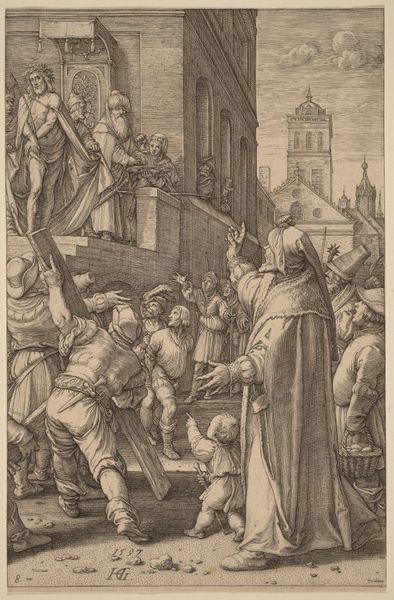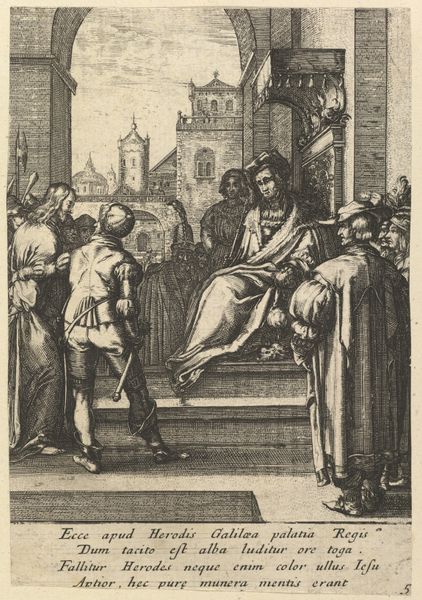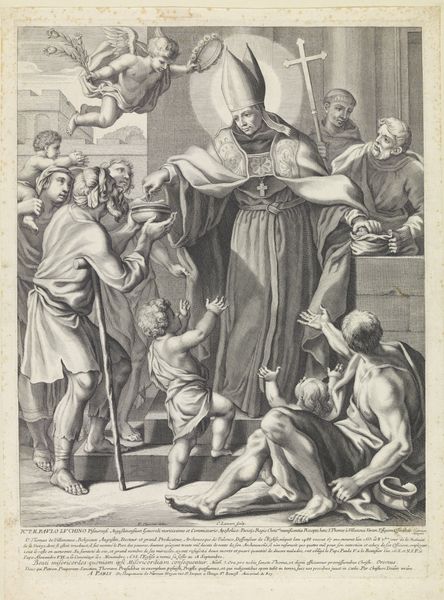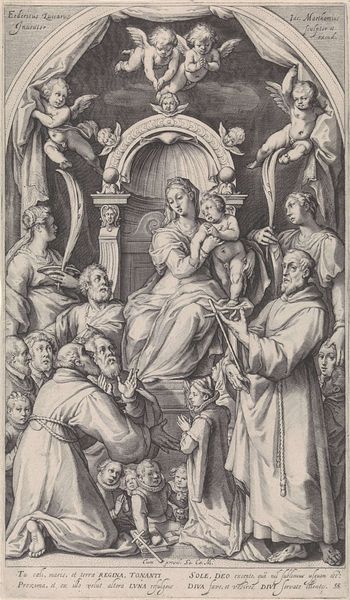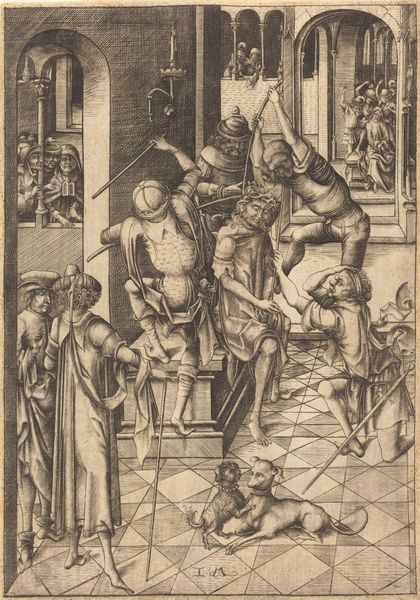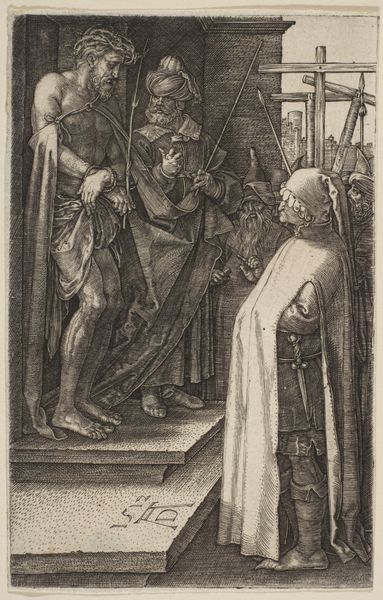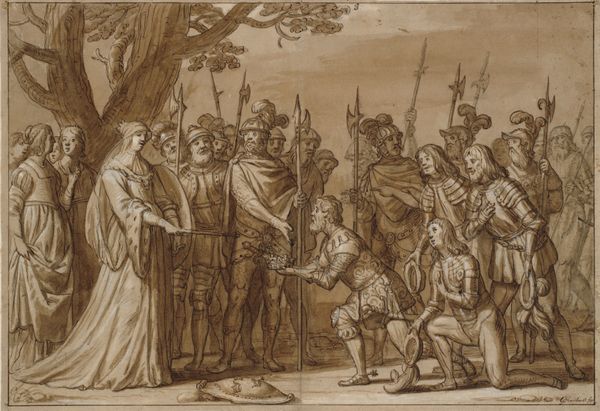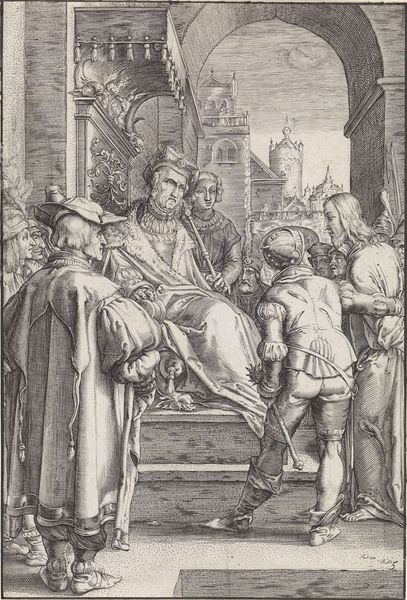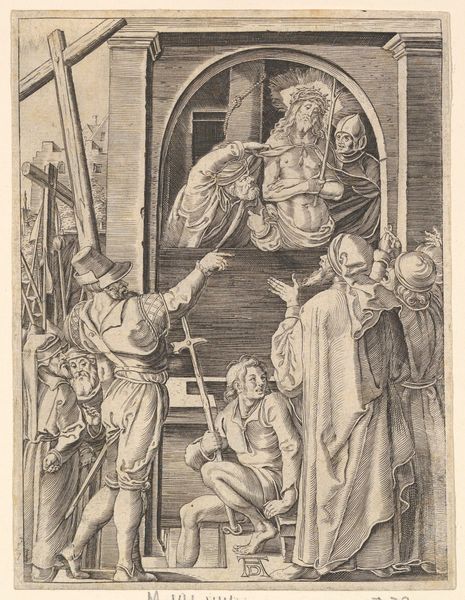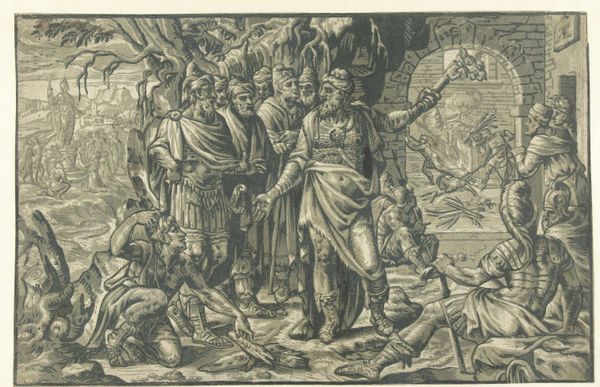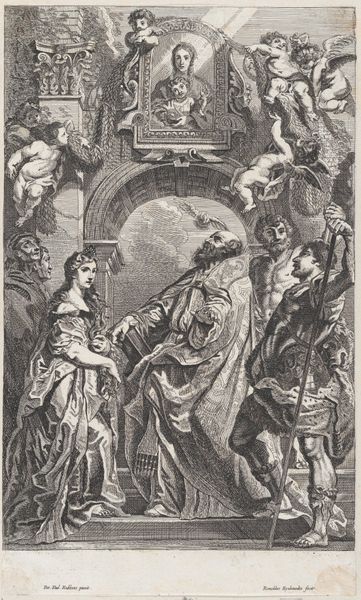
Joan of Arc at the Coronation of Charles VII in the Cathedral of Reims 1854
0:00
0:00
Dimensions: 240 x 178 cm
Copyright: Public domain
Editor: This is Jean-Auguste-Dominique Ingres's *Joan of Arc at the Coronation of Charles VII in the Cathedral of Reims*, painted in 1854. It's grand and glorifying, of course, but I'm drawn to the sharp details in her armor and the opulent fabrics. How do you see this piece through a different lens? Curator: I’m particularly interested in the labor involved in producing such a painting, both Ingres's and his assistants', but also thinking further back to the societal forces that produced both Joan and this representation of her. Editor: Can you elaborate on societal forces? Curator: Certainly. The materials themselves, the oil paint and canvas – where did those originate, who manufactured them, and under what conditions? The gilding we see on the altar evokes luxury and divine right, which relied on resource extraction and exploitation. Even Joan's armor speaks of specific metalworking techniques and economic systems supporting military campaigns. Consider this image and all the industries connected to the materials we see. Editor: That’s a really interesting way to think about it! I’m so used to focusing on the finished product, not all that went into making it possible. The textiles as commodities, the metals pulled from the earth… I never considered the exploitation tied to artistic glory! Curator: Indeed. Ingres presents Joan as this almost divine figure, but looking at the piece through a materialist lens reveals the material and social processes, that undergird her story, her production and that of the painting we're looking at now. Are there any of those industries or commodities that especially resonate with you? Editor: Definitely the armour. The reflection, the craftsmanship... I assumed the artist wanted to give her strength, but this connects to so much material that wasn't obvious at first! Curator: Exactly. By questioning the means of production, we move beyond just admiring aesthetics. This kind of close looking can open up a whole new understanding of history paintings like this one.
Comments
No comments
Be the first to comment and join the conversation on the ultimate creative platform.

